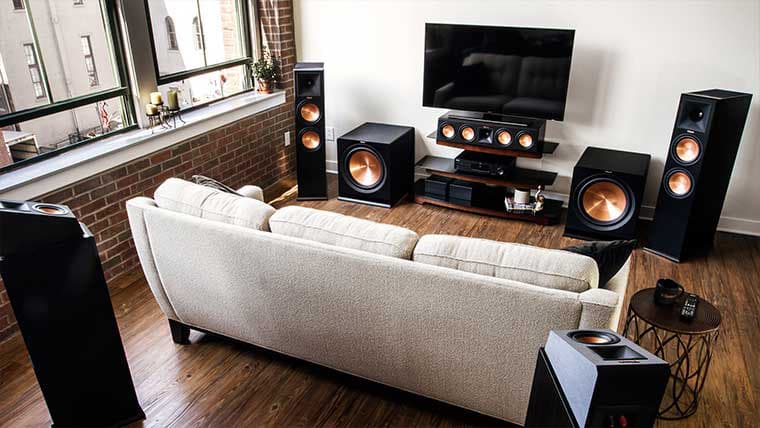In the age of streaming services, high-quality sound, and advanced technology, a home stereo system has become an essential part of creating the perfect audio experience in your living space. Whether you’re an audiophile, a movie enthusiast, or simply someone who enjoys high-quality sound, investing in the right whole home audio systems can elevate your entertainment. But with so many options on the market, how do you know which one is right for you? Let’s break down the key aspects to help you make an informed decision.
What is a Home Stereo System?
A home stereo system refers to a set of audio equipment designed to reproduce high-quality sound at home. Typically, it consists of a combination of speakers, amplifiers, and other components like a receiver or audio sources (such as a turntable, CD player, or streaming device). These systems are built to deliver powerful, immersive sound, whether you’re playing music, watching movies, or gaming.
Key Components of a Home Stereo System
- Speakers
- Floorstanding Speakers: These large, tower speakers provide deep bass and wide-range sound. Ideal for audiophiles or home theater enthusiasts who want a rich, immersive experience.
- Bookshelf Speakers: Smaller in size, these are ideal for more compact spaces but still offer excellent sound quality. They are great for casual listening and typically more affordable.
- Subwoofers: A subwoofer is a special type of speaker designed to produce deep bass frequencies, adding impact to music, movies, and gaming soundtracks.
- Satellite Speakers: Used primarily in surround sound systems, satellite speakers are small but capable of delivering high frequencies and contributing to a fuller soundstage.
- Receiver or Amplifier The heart of any stereo system, the receiver (or integrated amplifier) powers the speakers and processes audio signals. Receivers can include built-in features like:
- FM/AM radio tuners
- Bluetooth or Wi-Fi connectivity for streaming
- Surround sound processing for home theater setups
- Multiple input options for various devices
- Audio Sources
- Turntables: For vinyl enthusiasts, a turntable offers the analog sound that many believe brings out the richness in music.
- CD Players: Though digital streaming is popular, many still enjoy the sound of a high-quality CD player in their stereo setup.
- Streaming Devices: Streaming services like Spotify, Apple Music, and Tidal are popular audio sources, often accessed through Bluetooth or Wi-Fi.
- Home Theater Components: If you’re building a home theater system, a Blu-ray player, gaming console, or streaming box (like Apple TV or Roku) can be integrated.
- Wires and Cables Quality cables are vital for transmitting signals from one component to another. You’ll need speaker cables, interconnects for your source components (such as RCA or HDMI cables), and possibly optical cables for higher-quality digital audio.
Types of Home Stereo Systems
- 2-Channel Stereo System This is the traditional setup with two speakers and an amplifier, providing a simple but pure listening experience. Ideal for music lovers who want excellent sound without the complexity of surround sound.
- Home Theater System (5.1 or 7.1 Surround Sound) Designed to offer a cinematic experience, home theater systems include multiple speakers (front, rear, and center) and a subwoofer. They are perfect for movie lovers or gamers looking to enhance their audio-visual experience.
- All-in-One Systems For those who want convenience and ease of setup, all-in-one systems combine the amplifier, speakers, and other components into a single unit. These are often smaller and more compact but still provide good sound quality for casual listening.
- Wireless/Smart Systems Modern home stereo systems now come with wireless capabilities, integrating Bluetooth, Wi-Fi, or even voice control with smart assistants like Alexa or Google Assistant. This makes it easier to stream music from your devices without worrying about tangled cables.
Choosing the Right Home Stereo System
When selecting a home stereo system, several factors should be considered:
- Room Size and Acoustics A larger room may require floorstanding speakers and a more powerful amplifier, while a smaller room could benefit from compact bookshelf speakers or a wireless system. It’s also important to consider the room’s acoustics; furniture, wall materials, and layout can all influence sound quality.
- Sound Quality The primary goal of any stereo system is sound quality. Look for systems that offer balanced sound—good bass, midrange, and treble. The speaker’s frequency response and the receiver’s wattage can give you an indication of the system’s performance.
- Connectivity Options Modern stereo systems offer a variety of connection options. If you plan to connect several devices (TV, turntable, gaming console), make sure your receiver supports enough input options. Bluetooth and Wi-Fi functionality are also must-haves for easy streaming.
- Budget Home stereo systems can range from affordable to premium. High-end systems with audiophile-quality speakers and amplification will be on the pricier side, but you can still find great options in the mid-range category. Determine your budget and balance it with your sound quality needs.
- Aesthetics While sound is the top priority, the look of your stereo system matters too. Choose a design that complements your home décor, whether that’s sleek and modern or more traditional.
Conclusion
A home stereo system is more than just an audio setup; it’s an investment in creating the ultimate sound experience. Whether you’re listening to your favorite albums, watching movies, or playing games, a high-quality stereo system can elevate your entertainment to new heights. Take the time to research the different components, types, and features, and choose a system that fits both your space and your audio preferences.
